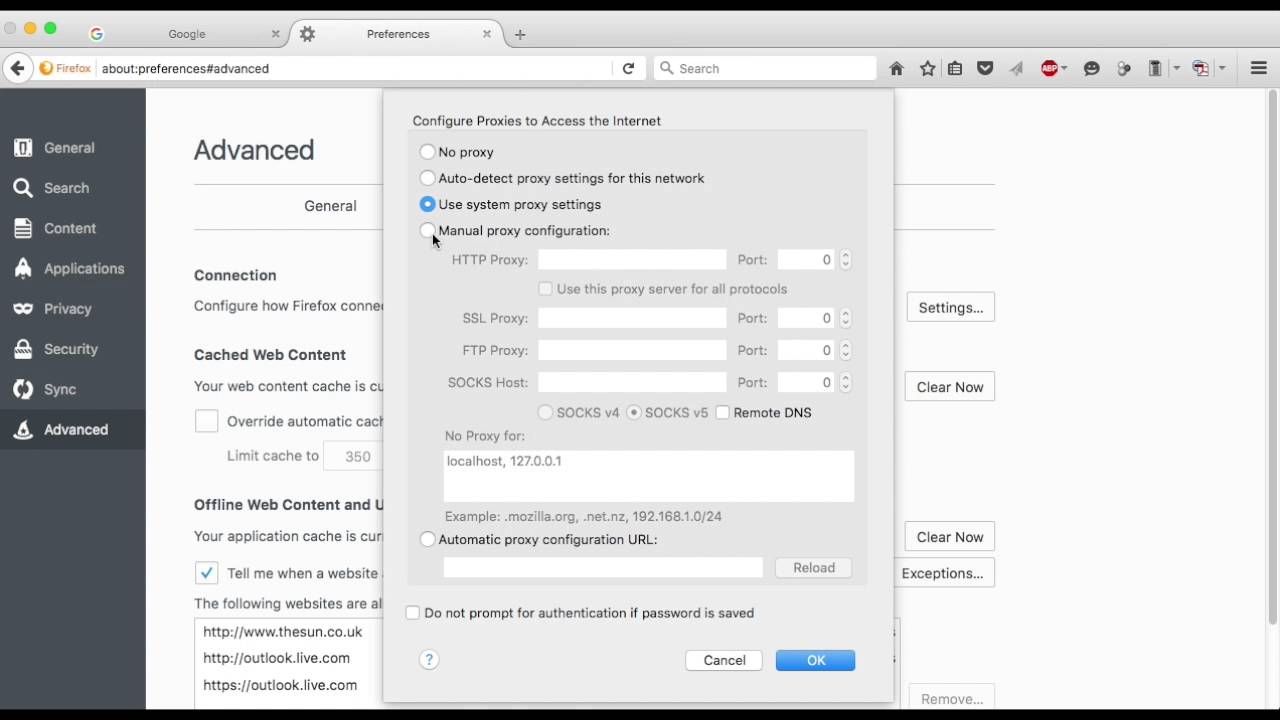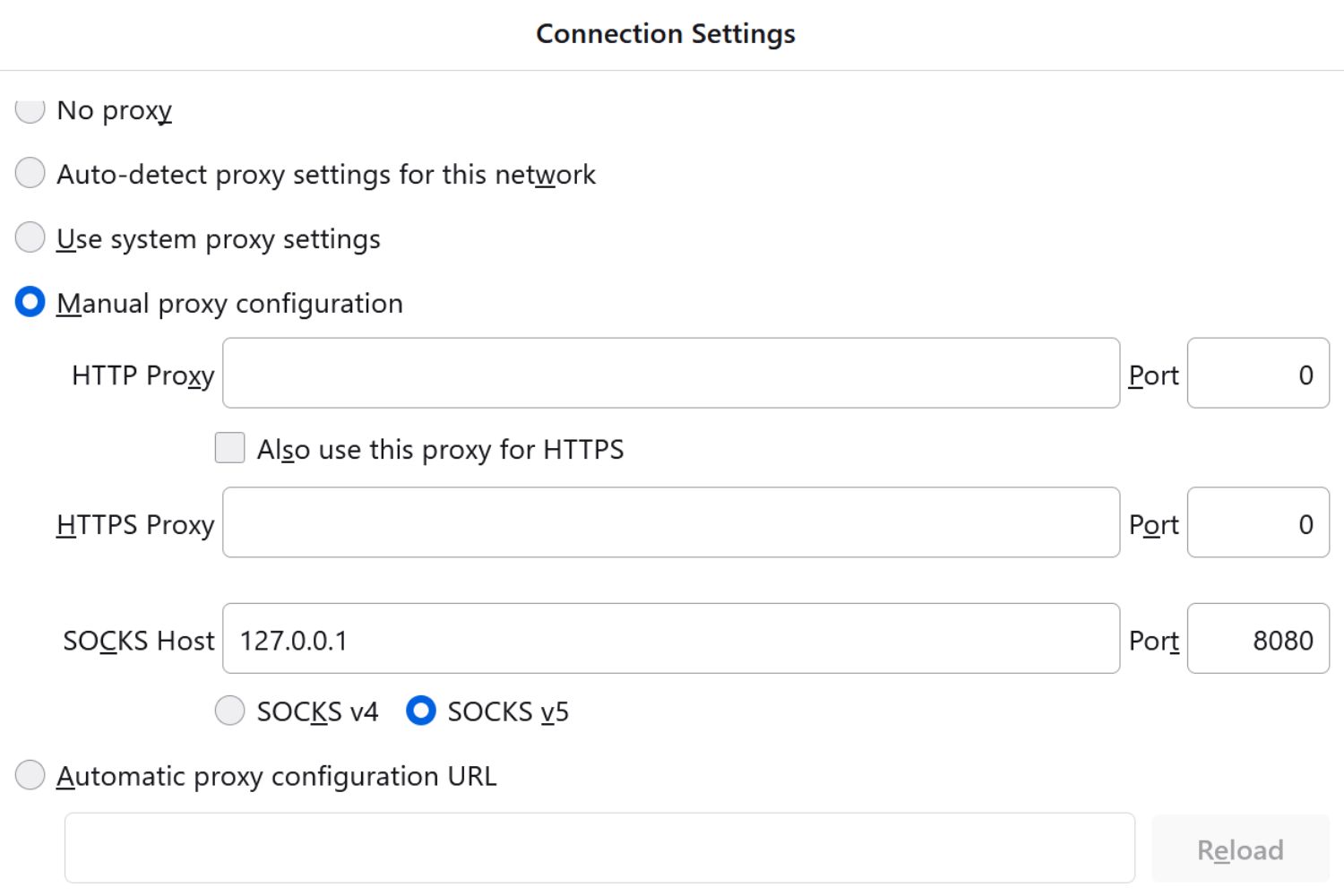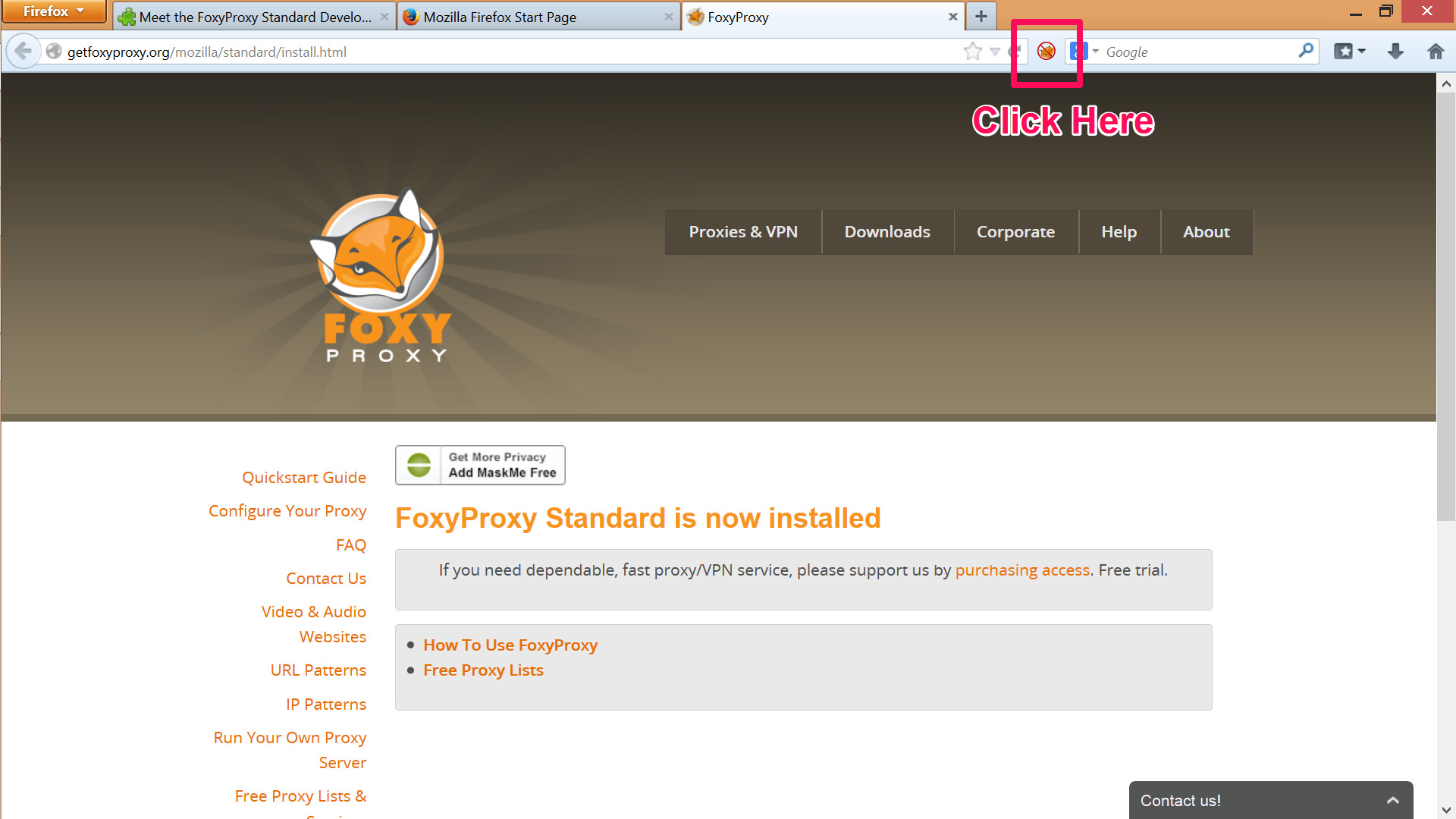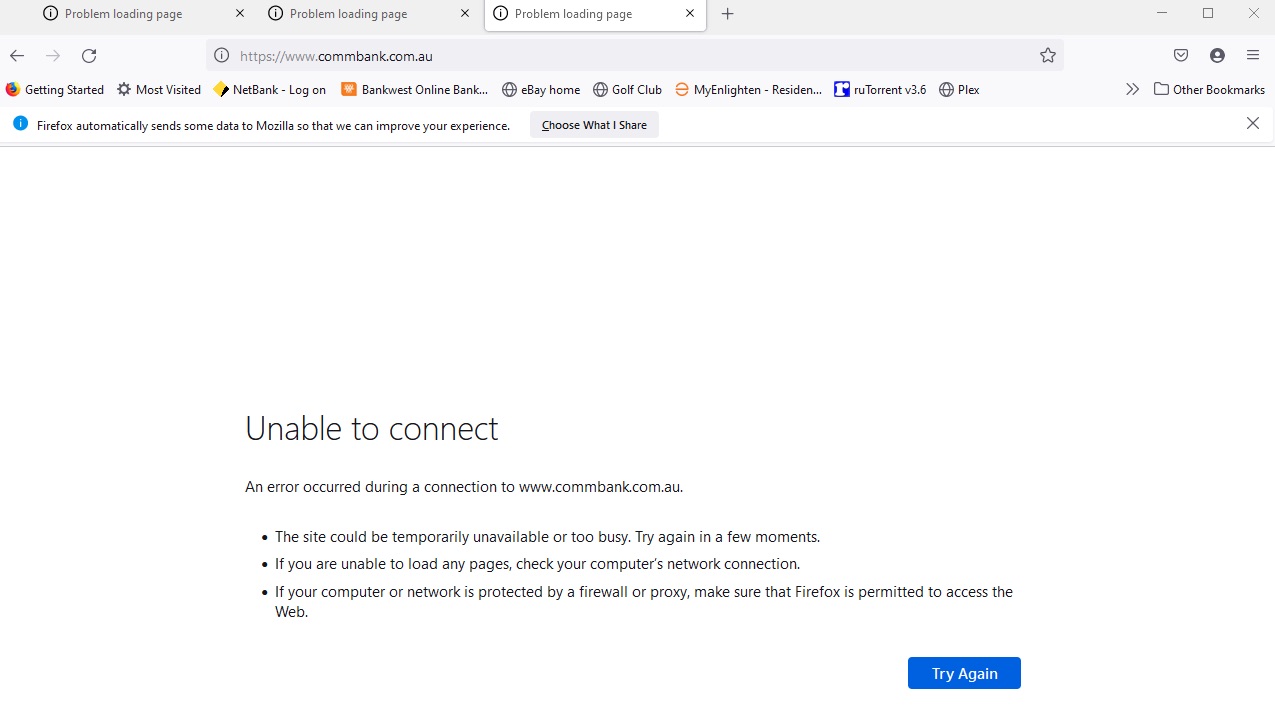Introduction
Proxy servers are a vital tool for internet users, providing enhanced privacy, security, and access to restricted content. For Firefox users, utilizing a proxy server can offer numerous benefits while browsing the web.
In this article, we will explore what a proxy server is, why you might want to use one with Firefox, and how to set it up effectively. Whether you want to mask your IP address, bypass geo-restrictions, or protect your online activities, a proxy server can be a valuable asset.
With proxy servers, your internet traffic is routed through a separate server before reaching the destination website. This means that your IP address is masked, making it difficult for websites to track your online activities and collect personal information. Additionally, you can access websites and content that may be blocked or restricted in your location.
Firefox, being one of the most popular web browsers, allows users to configure proxy server settings easily. By utilizing a proxy server with Firefox, you can enjoy a more private and secure online experience.
In the following sections, we will guide you through the process of setting up a proxy server in Firefox, step by step. We will also cover some common troubleshooting tips to help you resolve any issues you may encounter along the way.
So, whether you are concerned about online privacy, want to access geo-restricted content, or simply want to enhance your browsing experience, using a proxy server with Firefox can be an effective solution. Let’s dive into the details and get started on setting up your proxy server.
What is a Proxy Server?
A proxy server acts as an intermediary between your device and the internet. It serves as a gateway, forwarding your requests to websites and retrieving data on your behalf. When you use a proxy server, your internet traffic is rerouted through this server, which then communicates with the website you are trying to access.
One of the primary functions of a proxy server is to provide anonymity by hiding your IP address. Instead of directly connecting to websites, your requests are sent through the proxy server, masking your IP address in the process. This adds a layer of privacy and protection, as websites and online services will only see the IP address of the proxy server.
Proxy servers also allow you to bypass geo-restrictions, meaning you can access content that may be blocked in your location. For example, if a video streaming platform limits access to certain regions, you can use a proxy server located in an unrestricted region to bypass this restriction and watch the content.
Another benefit of using a proxy server is that it can improve the speed and performance of your internet connection. By caching frequently accessed data, proxy servers can deliver content more quickly, reducing the load on the destination server and potentially enhancing your browsing experience.
There are different types of proxy servers available, including HTTP, HTTPS, SOCKS, and FTP proxies. Each type is designed for specific purposes and protocols. For example, HTTP proxies are commonly used for web browsing, while SOCKS proxies are more versatile and can handle various types of traffic.
Overall, a proxy server acts as a middleman between your device and the websites you access, providing privacy, security, and the ability to bypass restrictions. By employing a proxy server, you can take control of your online presence and enjoy a more unrestricted browsing experience.
Why use a Proxy Server with Firefox?
Firefox, as a popular web browser, offers users the flexibility to configure proxy server settings easily. By leveraging a proxy server with Firefox, you can enjoy several advantages:
- Enhanced Privacy: Using a proxy server with Firefox enables you to maintain your online privacy. By routing your internet traffic through the proxy server, your IP address is masked, making it challenging for websites to track your activities and collect personal information.
- Bypassing Geo-Restrictions: Some websites or online services may restrict access based on the user’s geographical location. By using a proxy server, you can effectively bypass these restrictions and access geo-blocked content. Simply choose a proxy server located in a region where the content is available, and you can enjoy unrestricted browsing.
- Improved Security: Proxy servers can act as a filter, intercepting potentially harmful or malicious content before it reaches your device. This added layer of security can help protect your device from malware, viruses, and other online threats.
- Faster Browsing: Proxy servers can also enhance your browsing speed and performance. By caching frequently accessed data, proxy servers can deliver content more quickly, reducing the load on the destination server and improving your overall browsing experience.
- Anonymous Web Surfing: Utilizing a proxy server with Firefox allows you to surf the web anonymously. Websites and online services will only see the IP address of the proxy server, providing an additional layer of anonymity and preventing your actual IP address from being exposed.
- Access to Localized Content: Proxy servers can be utilized to access localized content that may not be available in your country. For instance, if you want to watch television shows or access websites specific to another region, using a proxy server located in that region will give you the ability to access and enjoy the content.
Whether you are concerned about online privacy, want to access restricted content, improve your browsing speed, or simply want to enhance your overall online security, using a proxy server with Firefox can provide you with the necessary tools and flexibility to achieve your desired goals.
How to Set Up a Proxy Server in Firefox
Configuring a proxy server in Firefox is a straightforward process that can be done in just a few simple steps. Follow the guide below to get started:
- Step 1: Accessing Firefox’s Connection Settings
- Step 2: Configuring the Proxy Server
- Step 3: Testing the Proxy Server Configuration
To begin, open the Firefox browser on your computer and click on the “Menu” button located at the top-right corner. From the dropdown menu, select “Options” or “Preferences” (depending on your operating system).
In the options or preferences window, navigate to the “General” or “Advanced” tab. From there, select “Network Settings” or “Connection Settings.”
In the connection settings window, you will see various options for configuring the proxy server. Choose the radio button or checkbox that says “Manual proxy configuration.”
Next, enter the IP address or hostname of the proxy server in the “HTTP Proxy” or “SOCKS Host” field, depending on the type of proxy server you are using.
If your proxy server requires authentication, tick the box that says “Use this proxy server for all protocols” and input your username and password in the respective fields.
After you have entered the necessary proxy server details, click on the “OK” button to save the settings and close the connection settings window.
To check if the proxy server is working correctly, visit a website and verify if your IP address has changed. You can use online tools or simply type “What is my IP address” in your search engine, and it should display the IP address associated with the proxy server.
Congratulations! You have successfully set up a proxy server in Firefox. You can now enjoy the benefits of enhanced privacy, unrestricted access, improved security, and faster browsing speeds.
If you encounter any issues with the proxy server configuration, continue reading the next section for troubleshooting tips and solutions.
Step 1: Accessing Firefox’s Connection Settings
Setting up a proxy server in Firefox requires accessing the browser’s connection settings. Follow the steps below to access these settings:
- Open the Firefox browser on your computer and locate the “Menu” button at the top-right corner of the browser window. This button usually appears as three horizontal lines.
- Click on the “Menu” button to open a dropdown menu.
- From the dropdown menu, select “Options” if you are using Windows or “Preferences” if you are using macOS.
- In the options or preferences window, you will see various tabs along the left-hand side. Look for the tab labeled “General” or “Advanced” and click on it. The specific name of the tab may vary depending on your Firefox version and operating system.
- Within the “General” or “Advanced” tab, locate and select the “Network Settings” or “Connection Settings” option. This option is usually found in the middle of the window.
- By clicking on “Network Settings” or “Connection Settings,” a new window will open with various proxy configuration options.
Now you have successfully accessed Firefox’s connection settings. In the next step, we will walk you through configuring the proxy server settings.
Step 2: Configuring the Proxy Server
Once you have accessed Firefox’s connection settings, you can proceed to configure the proxy server settings. Follow the steps below to configure the proxy server in Firefox:
- Within the connection settings window, you will see several options for configuring the proxy server. Look for the section that says “Configure Proxies” or “Proxy Settings.”
- Select the radio button or checkbox that says “Manual proxy configuration.” This option allows you to manually input the proxy server details.
- Next, locate the “HTTP Proxy” or “SOCKS Host” field, depending on the type of proxy server you are using. In this field, enter the IP address or hostname of the proxy server.
- If your proxy server requires authentication, tick the box that says “Use this proxy server for all protocols” or “Use the same proxy for all protocols.” Then, enter your username and password in the provided fields.
- Depending on your proxy configuration, there may be additional fields for other proxy types, such as “SSL Proxy” or “FTP Proxy.” If applicable, enter the corresponding proxy server details for each field.
- Once you have entered the necessary proxy server information, click on the “OK” or “Apply” button to save the settings.
At this point, you have successfully configured the proxy server in Firefox. The browser will now use the specified proxy server for your internet connections.
Remember, if you encounter any issues with the proxy server configuration, double-check the entered details and ensure that your proxy server is functioning correctly. In the next step, we will guide you on how to test the proxy server configuration to ensure it is working as intended.
Step 3: Testing the Proxy Server Configuration
After configuring the proxy server in Firefox, it is important to test the configuration to ensure it is working correctly. Follow the steps below to test your proxy server configuration:
- With the proxy server settings saved, open a new tab or window in Firefox and navigate to any website of your choice.
- Once the webpage loads, check if your IP address has changed. You can do this by using an online IP address lookup tool or by simply typing “What is my IP address” in your search engine.
- If your IP address matches the proxy server’s IP address or is different from your original IP address, then the proxy server is functioning correctly and successfully routing your internet traffic.
- If your IP address has not changed or there are other issues, double-check the proxy server settings. Ensure that the IP address or hostname, port number, and any authentication details are correct.
- If you are still experiencing problems, try restarting Firefox or your device to ensure the new proxy server settings take effect.
- Additionally, you may want to test the proxy server with different websites and network activities to confirm its reliability and performance.
By following these steps and testing the proxy server configuration, you can ensure that your internet traffic is being routed through the proxy server and enjoy the benefits of enhanced privacy, access to restricted content, and improved security.
If you encounter any issues during this step or are unable to successfully test the proxy server configuration, continue reading the next section for troubleshooting tips and solutions.
Troubleshooting Proxy Server Issues
While setting up and using a proxy server with Firefox, you may encounter some common issues. Below, we outline troubleshooting tips and solutions to help you resolve these problems:
- Incorrect Proxy Server Configuration: Double-check the entered proxy server details, including the IP address, port number, and any authentication credentials. Ensure that all information is accurate and matches the proxy server settings provided to you.
- Proxy Server Compatibility: Verify that the type of proxy server you are configuring (HTTP, HTTPS, SOCKS, etc.) is compatible with Firefox. Some proxy servers may only support specific protocols, so make sure you select the appropriate option in the connection settings.
- Proxy Server Availability: Ensure that the proxy server you are using is currently active and accessible. If the proxy server is down or experiencing technical issues, it can prevent the correct functioning of your proxy configuration.
- Firewall or Antivirus Interference: Your firewall or antivirus software may be blocking the connection to the proxy server. Temporarily disable these security measures and test the proxy server configuration again. If the problem is resolved, adjust the settings of your security software to allow the proxy connection.
- Network Connectivity Issues: Check your internet connection to ensure it is stable and working properly. If you are experiencing network connectivity issues, such as intermittent connections or slow speeds, it may affect the performance of the proxy server.
- Restart Firefox or Device: If you have made changes to the proxy server settings and they are not taking effect, try restarting Firefox or your device. This can help refresh the browser settings and ensure the new configuration is applied correctly.
- Clear Browser Cache: Clearing your browser’s cache and cookies can sometimes resolve issues related to proxy server configuration. Go to Firefox’s settings, find the privacy or history section, and select the option to clear cache and cookies. Afterward, restart Firefox and test the proxy server again.
- Consult Proxy Server Provider: If you have followed all troubleshooting steps and are still experiencing issues, reach out to your proxy server provider for assistance. They can provide specific guidance tailored to their proxy server setup and troubleshoot any issues on their end.
By following these troubleshooting tips, you can address common proxy server issues and ensure that your proxy server configuration works seamlessly with Firefox. Remember to consult relevant documentation or support from your proxy server provider for additional guidance if needed.
Conclusion
Setting up and using a proxy server with Firefox can offer numerous benefits, including enhanced privacy, access to restricted content, improved security, and faster browsing speeds. By following the steps outlined in this guide, you can easily configure a proxy server in Firefox and customize your browsing experience to suit your needs.
Remember that choosing a reliable and reputable proxy server provider is crucial for ensuring optimal performance and security. Consider factors such as server location, speed, uptime, and customer support when selecting a proxy server provider.
While configuring the proxy server, keep in mind the importance of accuracy and attention to detail when entering the proxy server details. Double-check all the information to ensure the proxy server settings are correctly configured in Firefox.
If you encounter any issues during the process, refer to the troubleshooting tips provided in this guide. Addressing common problems and performing the necessary troubleshooting steps can help resolve any issues and ensure your proxy server configuration works smoothly.
With a proxy server set up in Firefox, you can enjoy a more private, secure, and unrestricted browsing experience. Whether you want to protect your online privacy, access geo-restricted content, or improve your browsing speed, utilizing a proxy server with Firefox offers you the flexibility and control over your internet connection.
Take full advantage of the benefits provided by proxy servers and customize your browsing experience with Firefox. Stay informed about the latest updates and developments in proxy server technology to maximize the advantages of using a proxy server in your online activities.

























